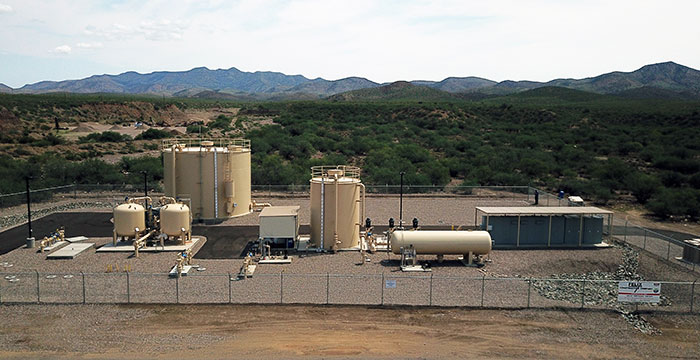The Arizona Water Company water system in the city of Miami, Arizona had been relying on blending water from its wells to stay in compliance with arsenic concentration requirements, but increasing levels were projecting more would need to be done to sustain the water quality in the future. To proactively protect the communities it serves, a new arsenic removal facility (ARF) was designed and constructed to treat water from two of the three supplying wells. Between September of 2016 and July of 2018, Arizona Water Company (AWC) and the design-build (DB) team of FELIX Construction, and GHD planned, designed, obtained all permits and governmental approvals, constructed and commissioned the ARF, along with a Booster Pump Station, Water Storage Tank, and Well Re-equipping and Related Appurtenances that were needed to treat, store and pump water from the existing production wells. Arsenic concentrations can vary seasonally and according to withdrawal amounts, so the ARF is compatible with three different manufacturers of arsenic removal media, which provides operational flexibility to adjust blending based on changing arsenic concentrations, as well as long-term efficiency of the use of the arsenic treatment media.
Other project highlights include minimizing the site footprint to increase efficiency, and building increased resiliency into the hydraulics of all the components for the life cycle of the infrastructure. The team conducted a transient analysis to identify undesired operational conditions in the hydraulic conveyance system, and built a model to predict the frequency of those potential events. That enabled them to evaluate mitigation methods, and then to make recommendations on what redundancy features to add. Overall, four levels of redundancy were implemented, which protect the most expensive portions of the system and ultimately reduce the long-term costs of the project.



